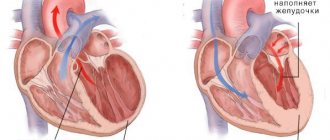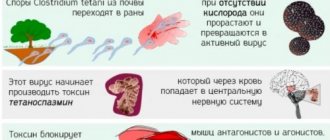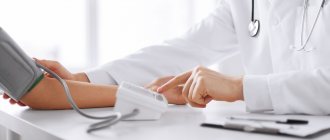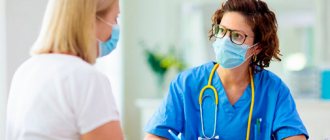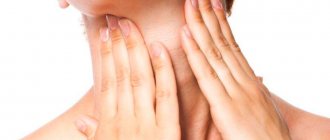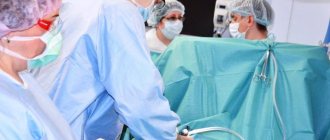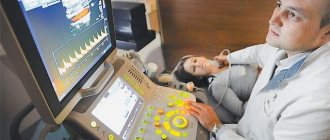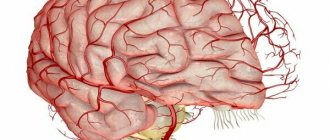Almost everyone is familiar with the feeling of shortness of breath when running or climbing stairs.
But there are cases when shortness of breath occurs when walking only a few tens of meters or even at rest. If in such situations it becomes difficult to breathe, then the matter is serious.
Breathing is a natural process, so we don’t notice it. But we immediately feel if there is something wrong with our breathing. Especially when, out of the blue, we start to choke. The brain receives a corresponding signal, and our breathing quickens, and this process cannot be controlled by consciousness. Its frequency and rhythm, the duration of inhalation or exhalation have changed - in a word, you feel that something is clearly wrong with your breathing. This is shortness of breath.
Cause of feeling short of air
Shortness of breath is a violation of the depth and rhythm of breathing , which is accompanied by a feeling of lack of air. Often associated with impaired nervous regulation, bone and muscle injuries, and anomalies. Shortness of breath may be compensatory in nature (lack of atmospheric oxygen). It occurs in neuroses, cardiovascular diseases, disturbances in the functioning of the respiratory center, flatulence (the lungs are compressed by the diaphragm), in physically weak people during physical exertion and in some other cases.
Not enough air when breathing causes. A feeling of shortness of breath is one of the most common symptoms of anxiety and panic attacks.
Causes and treatments
To determine the cause of shortness of breath, it is important to know how quickly it appeared. It can occur acutely - within minutes, hours, several days, or gradually - over several weeks, months or years. Let's look at the main reasons.
- Poor physical shape
In principle, in this case, shortness of breath is more likely a normal phenomenon than a cause for serious concern.
Physiological shortness of breath appears after you climb the stairs or catch up with the bus. The muscles involved in the work remove oxygen from the blood. The brain tries to cover the resulting oxygen deficiency, that is, it forces us to breathe more often. Such shortness of breath in itself is not dangerous, but if you find yourself out of breath even after climbing a couple of floors, it’s time to think about your physical fitness. In physically active and trained people, shortness of breath occurs less frequently.
What to do to get rid of such shortness of breath? Regular aerobic exercise is needed, which leads to an increase in respiratory rate and heartbeat. If you don't have time to go to the gym, brisk walks will do. Go up and down the stairs within 3-4 floors.
- Panic attack
As you know, strong excitement, anxiety, anger and fear stimulate the production of adrenaline. Once in the blood, adrenaline forces the body to pass a lot of air through the lungs, causing hyperventilation. Therefore, during serious experiences, the heart rate increases and shortness of breath appears. What to do? Shortness of breath caused by such strong emotions is, in principle, safe for health. However, for serious panic attacks (and not just shortness of breath from anxiety), it is better to consult a doctor. Severe shortness of breath during panic may indicate a disease - for example, vegetative-vascular dystonia (VSD).
- Anemia or anemia
The most common is iron deficiency anemia. Iron ions saturate the blood with oxygen and play an important role in hematopoiesis. When they are deficient, hypoxia develops and an emergency protective mechanism—shortness of breath—is activated. This condition is more typical for women, although men also often experience a lack of iron in the body. The presence of anemia is diagnosed based on clinical blood test data. What to do to get rid of anemia and shortness of breath? If the hemoglobin level decreases significantly, the doctor prescribes treatment with iron-containing drugs. They must be taken for at least two months and monitor proper nutrition. Iron is well absorbed from liver and red meat, but from plant foods, such as buckwheat or pomegranates, which are considered a panacea for anemia, it is quite poorly absorbed. To ensure that the iron contained in the drug or food is better absorbed, vitamin C is also prescribed.
- Obesity
This is no longer just a lack of training, but a serious illness that requires a lot of effort from a person to improve his health. In this case, it is not the external fat on the hips or buttocks that poses the danger, but the internal one, since obesity is not just a cosmetic defect. A layer of fat envelops the lungs and heart, preventing a person from breathing normally. In addition, in obese people, the heart endures increased stress, since it needs to pump blood into a large fat pad. Therefore, less oxygen reaches important organs. There is only one solution to the problem - get rid of fat under the supervision of a doctor. You cannot start with intense training in the gym - there is a high risk of losing consciousness.
- Pulmonary diseases
Shortness of breath that occurs with diseases of the respiratory organs is of two types. Inspiratory - when there is difficulty in inhaling as a result of clogging of the bronchi with mucus or with lung tumors, and expiratory - when there is difficulty in exhaling as a result of spasms that occur with bronchial asthma. To determine the causes of pulmonary shortness of breath, you will have to undergo examination and treatment under the supervision of a specialist.
- Cardiac ischemia
In this case, shortness of breath is manifested by a feeling of lack of air. In general, shortness of breath is as typical a sign of coronary heart disease as squeezing pain in the left side of the chest. What to do? If you experience shortness of breath and severe chest pain for the first time, call an ambulance immediately. In men, especially young men, coronary heart disease sometimes manifests itself for the first time as a myocardial infarction. When providing first aid, the scope of research is usually limited to a cardiogram, and after that the decision regarding examination and treatment is made by a cardiologist.
- Congestive heart failure
It is quite difficult to catch the early signs of this disease - this is usually done with the help of special examinations. In congestive heart failure, shortness of breath is always accompanied by a forced position of the patient. It occurs in a person lying on a low pillow and goes away when the patient assumes a sitting position. For example, US President Roosevelt slept in a sitting position in a chair for precisely this reason. This shortness of breath occurs due to increased blood flow to the heart in a supine position and overflow of the heart chambers. Treating shortness of breath in heart failure is not an easy task, but experienced cardiologists and modern medications sometimes work wonders.
- Cardiac asthma or paroxysmal dyspnea
Such sudden shortness of breath, which develops into suffocation, often appears at night. Shortness of breath does not go away either in a sitting or standing position. The person becomes pale, moist wheezing appears in the chest, and the lungs begin to swell. This condition threatens the patient’s life, so you should immediately call an ambulance. Typically, prompt treatment is effective and eliminates an attack of cardiac asthma. In this case, the patient will need to regularly visit a cardiologist, since only competent treatment of cardiovascular diseases will maintain normal health.
- Pulmonary embolism
Almost the most common cause of shortness of breath is deep vein thrombophlebitis.
At the same time, a person does not always develop varicose veins on the surface of the skin, which would give a call to see a doctor. The insidiousness of deep vein thrombophlebitis is that the first episode is quite easy - the leg swells slightly, pain and cramps appear in the calf muscle - the sensations are just like a sprain, and there is no prompting to be examined by a doctor. The problem is that after this, blood clots appear in the veins of the problem limb, which can move to the pulmonary artery and block the lumen in it. And this, in turn, leads to the death of a section of the lung - infarction-pneumonia. Signs of pulmonary embolism are severe shortness of breath that suddenly appears against the background of normal health, stabbing pain in the chest, and a painful cough. In especially severe cases, a person’s face turns blue. Modern medical methods effectively treat this serious disease, however, it is better not to lead to thromboembolism, but to promptly seek help from a doctor if there is any suspicion of pathology of the veins of the lower extremities. Signals may include swelling, heaviness in the legs and cramps in the calf muscles. As you can see, shortness of breath appears for many reasons, ranging from those requiring only some lifestyle changes to those that require serious treatment. Fortunately, many conditions can be prevented or significantly alleviated by timely treatment of pulmonary and cardiovascular diseases. There are contraindications. Read the instructions or consult a cardiologist at the EMC clinic.
Shortness of Air: Case Studies
Woman, 32 years old, entrepreneur.
From the anamnesis: over the past five to seven years, I worked very hard, practically never rested. A month before the first complaints appeared, she gave birth to a child (caesarean section). She did not tolerate anesthesia well (long awakening, headaches, drowsiness). A week after giving birth, an episode of “shortness of air” occurred.
I contacted our clinic in November 2011. The main complaint is a constant feeling of shortness of breath when breathing, aggravated by excitement, while talking with other people (“I can either breathe or talk”), as well as when walking, in enclosed spaces or public places.
Also about chills, unstable blood pressure, rapid resting pulse (up to 130 beats per minute). I developed a cold allergy (nasal congestion when going outside in the autumn-winter period).
The woman underwent 2 courses of therapy. There are currently no symptoms.
Female, 27 years old, journalist
The onset of his illness is associated with the stress he experienced. Before her eyes, her father suddenly dies, who, in her words, was an absolutely healthy person.
Just a few days after the funeral, she develops a classic panic attack with severe weakness, a feeling of shortness of breath when inhaling, shortness of breath and palpitations. Shortness of breath also tormented the patient during the interictal period. So, at the clinic appointment, she was noticeably breathing heavily, spoke with pauses, resting for a long time after several spoken phrases.
After the examination, a diagnosis of severe dysfunction of the autonomic nervous system was made.
After the first course of therapy, panic attacks stopped completely. A repeated course helped to cope with residual manifestations of the disease in the form of episodes of lack of air when breathing.
Feelings of fear and anxiety Presyncope, weakness Sweating, sweating, heavy sweat Prolonged low-grade fever Sleep disorder, insomnia, drowsiness Chronic fatigue syndrome Headaches Constant heaviness in the head
Muscle tone, spasm of the neck muscles Weather dependence Lack of air, heavy breathing Strong heartbeat, rapid pulse Burning in the abdomen, pain in the stomach Discomfort in the intestines, diarrhea Urinary incontinence Blurred vision, vision problems
"I can not breathe!" The pulmonologist explained why the coronavirus reminds itself a month later
— Will it be right if, after suffering from covid pneumonia, we start playing sports again as before in order to restore our lungs?
— Not really, after any acute illness that is accompanied by damage to the lung tissue, you need to gradually increase physical activity. Swimming in the pool is very useful for such patients, while the respiratory muscles work. But the basis of rehabilitation is the restoration of proper breathing. The first thing we teach in our consultations is breathing exercises, in particular diaphragmatic breathing.
It is with this type of breathing that the maximum saturation of the lungs with oxygen occurs. In fact, this is a very physiological type of breathing. Babies breathe this way; with age, this is lost. This is our most important recommendation; it is suitable for patients with psychogenic shortness of breath and for those who have changes in the lungs. It is also necessary to perform physical exercises: for the upper muscle group - exercises with dumbbells, exercises for muscular endurance, walking on stairs is also useful, you can use step platforms (steppers) at home. In our center, having several rehabilitation programs, we try to approach each patient individually, solving his breathing problems. All the methods we offer were developed by federal experts in the field of respiratory rehabilitation and experts from the World Health Organization. On average, exercise should be 20-30 minutes a day at least five times a week. Exercise increases blood flow and diaphragmatic breathing saturates the lungs with oxygen. All this prevents the formation of fibrous tissue in the lungs.
— How to understand whether physical activity is sufficient or not?
— There is a simple method from WHO experts. For example, at the height of physical activity, cross-country, say any phrase or sentence. Any: “Exercising is very good for me.” If you cannot pronounce a sentence without stopping, in its entirety, it means that the physical activity is excessive. If you pronounce the phrase with ease, the load is insufficient. If you stop slightly, after two or three words, this is an adequate load. But I repeat, if you haven’t run cross-country before, you shouldn’t start doing it immediately after a coronavirus infection. The most ideal thing, besides our professional rehabilitation complexes, is walking. This is available to everyone. We recommend walking 30 minutes to two hours a day. Moreover, we recommend planning all physical exercises and walks in the afternoon. This gives pleasant fatigue and promotes deeper and more complete sleep. And proper sleep is a very important part of any rehabilitation methods. It is during sleep that the body recovers after illness. We tell our patients a lot about quality sleep: complete darkness, all windows are curtained, comfortable temperature in the room - 19-23 degrees. The duration of night sleep should be at least 7–8 hours. And very important: falling asleep between 22 and 23 hours. This is the key to quality sleep and full recovery.
VSD in faces
This page contains excerpts from patient histories, covering the main complaints with which people turn to us for help. This is done with the goal of showing how different and “complex” the symptoms of vegetative-vascular dystonia can be. And how closely it is sometimes “fused” with disturbances in the functioning of organs and systems. How it “disguises” itself as “heart”, “pulmonary”, “stomach”, “gynecological” and even “psychiatric” problems that people have to live with for years...
To learn more
Mechanism and reasons
The respiratory system is one of the few vital systems of the human body that can be consciously regulated. At will, a person can not only inhale or exhale more or less often, but also form new breathing habits through targeted training.
It is this connection with the conscious area of the mind that causes emotional arousal to increase, and emotional depression to decrease, the frequency and depth of unconscious breathing. Due to the close relationship between the psycho-emotional and respiratory spheres, some experiences can cause such serious disturbances in the usual breathing rhythm as DN.
In particular, this kind of experience includes fear, anxiety, panic, hysterical attack, excitement and other similar emotions that provoke a biochemical imbalance of calcium and magnesium in the blood, which leads to disruption of the respiratory enzymes that provide pulmonary oxygen oxidation.
The result of these processes is hyperventilation of the lungs - a condition in which the level of carbon dioxide in the blood decreases due to its excessive release. A lack of CO₂ (hypocapnia) causes an increase in blood pH (alkalosis) due to excess accumulation of alkaline substances.
Why is high blood pH dangerous?
The main danger of alkalosis is the progressive inhibition of the activity of the respiratory center, as a result of which a so-called vicious circle arises when disturbances in the respiratory rhythm cause high blood pH, and high blood pH suppresses the functioning of the respiratory system.
Alkalosis also provokes other dangerous disorders:
- decreased blood pressure;
- decrease in the intensity of blood circulation, including cerebral circulation;
- the appearance of muscle hypertonicity, turning into cramps;
- increased heart rate;
- exacerbation of gastrointestinal diseases, constipation;
- frequent dizziness, sometimes with fainting;
- general deterioration of brain activity, leading to decreased intellectual abilities, decreased concentration and memory problems.
